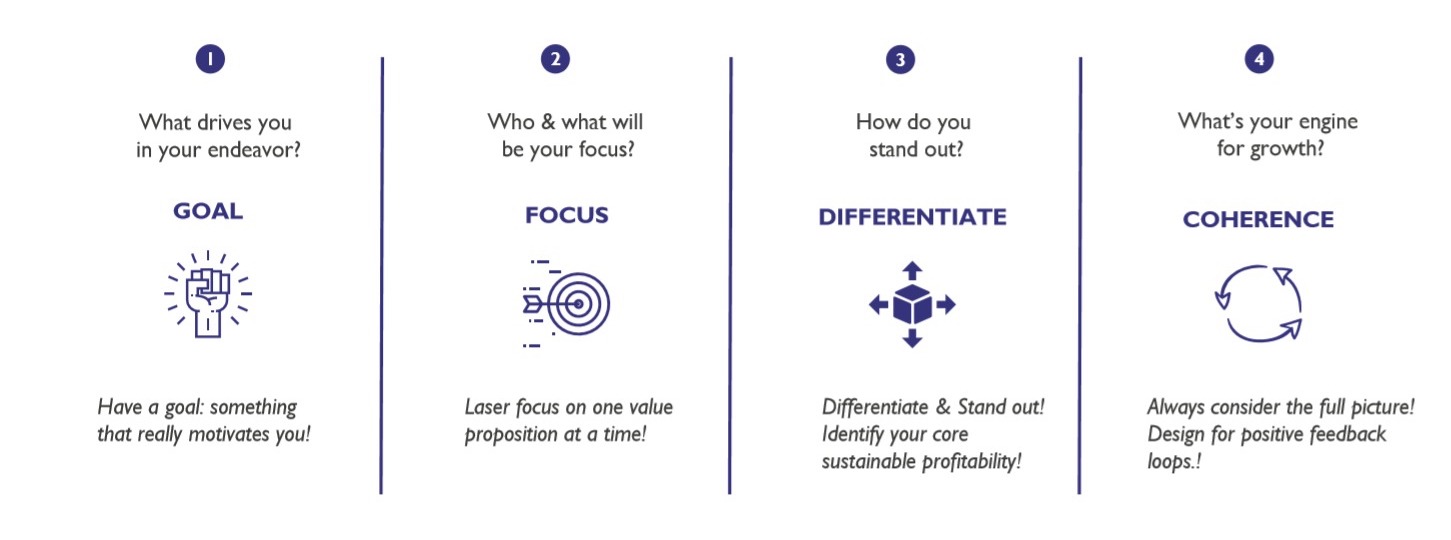
The 4 Laws Of Innovation That Make Or Break Your Sports Tech Innovation Process
24th Jun 2020
Having an innovative idea that could impact or possibly turn around the industry you’re in is one thing, but it’s a whole other thing to successfully work through an innovation process to bring that idea to life.
Over the past 2 years of coaching a few dozen sports tech startups in our SportUp programs, we guided our participating teams through their innovation process with the assistance of innovation partner imec, who discovered a set of 'laws' that are critical for innovation success.
If you neglect or ignore delivering on any of these 4 laws, the consequences can very well undermine your dream and lead to failure.
These laws apply to all areas of innovation including products, services, operations, marketing, sales, supply chain, etc, and aren’t strictly applicable to only startups - they apply to all sizes of organizations ranging from early stage start-ups to scale-ups to governments to well-established multi-nationals.
What are these 4 laws of innovation?
Our innovation partner imec discovered four laws, or four generic principles to successfully work through an innovation process. We asked imec innovation manager Joris Finck to introduce these 4 laws.

Law 1: Have a goal.
“You need to have a goal, and be able to atriculate that goal. What drives your endeavor? Why do you really want to turn this idea into reality? What are you aiming for, what do you want to get out of it?
Just as each of us needs a reason to get up every morning and feel motivated to start the day, innovation management also needs a specific goal we want to attain. Having a goal helps you choose and define your direction.
Where that goal stems from, doesn’t really matter. It doesn’t necessarily have to take root in intrinsic motivation, although many entrepreneurs become entrepreneurs because they worked or lived in a specific context that revealed specific frustrations about problems they experienced themselves, or they spotted opportunities or elements that could be improved, which pushes them towards innovation.
Having a clear goal also inspires and propels innovation teams forward. It keeps a certain cadence in the innovation process so that progress is constant. Teams that have a goal, are the ones who really lead innovation. Working towards a goal motivates."
Law 2: Finetune your focus.
“While almost every startup founder has at least somewhat of a goal, not many have a clear focus. It’s something we revisit a lot during the Boost program, because it’s so important.
To innovate with success, you’ll need to start off with a clearly defined customer segment, for whom you’re going to create a solution. Who and what will be your focus? It’s better to be more narrow focused instead of having a wide scope, because you’ll need to consider the costs related to chasing after every opportunity.
Look at it this way: spending your time on three different areas will slow down the process, while focusing on one single area will help you learn and evolve much quicker.
Aim for having a clear focus combined with an iterative mindset of testing, learning and adapting during the innovation process to get the best results.”
In a sports context, this means e.g. you better choose to focus on particular customer segments as getting people to get out of their couch, improve the quality of exercise training for fitness enthusiasts, or help football players to become stronger & quicker - just to name a few. (Tip: also read this blog if you plan to create a fitness training app).
Law 3: Differentiate.
“So how do you actually stand out from the existing competition?
Having defined a clear and narrow customer segment to focus on, you can’t just ignore the competitive field you're moving in. You still need to make it clear how you are different from what already exists in the market.
While many startups tend to mainly look at existing alternatives or specific competitors, you should also take behavior into account. For example, for many software startups, their target group shows competing behavior by using Microsoft Excel. Many companies rely on Excel, but refer to it as the ‘Excel Hell’.
So it’s possible that your software solution has no competing providers at this particular time, but you might need to compete with (engrained) behavior of your ideal customer.
So being able to distinguish yourself becomes very important. When you start an innovation process, make sure you understand very well who you’re differentiating from. Starting from a narrow customer segment is key here.”
Law 4: Create coherence.
“Coherence is how your whole story is connected, on every layer. While having the innovatrix framework in mind, and examining the needs of your target group and your value proposition, are they in line with each other? Does your value proposition solve a fundamental issue, or something trivial?
Examples of other coherence checkmarks are: does the value proposition differentiate enough from the current practices and does it make sense? Is your value proposition achievable? Is the technology you have in mind able to deliver the value proposition and can it really solve the need?
And also, you’ll want to make sure you can add positive feedback loops to the whole solution design; which are behavioral or technical functionalities that help grow your community while demand grows. Thus, coherence means: the ability to combine everything and create an engine for growth.”
There you go. Those are the four laws of innovation. Take these into account and you'll drastically increase your chances for success... or at least prevent your project from failure!